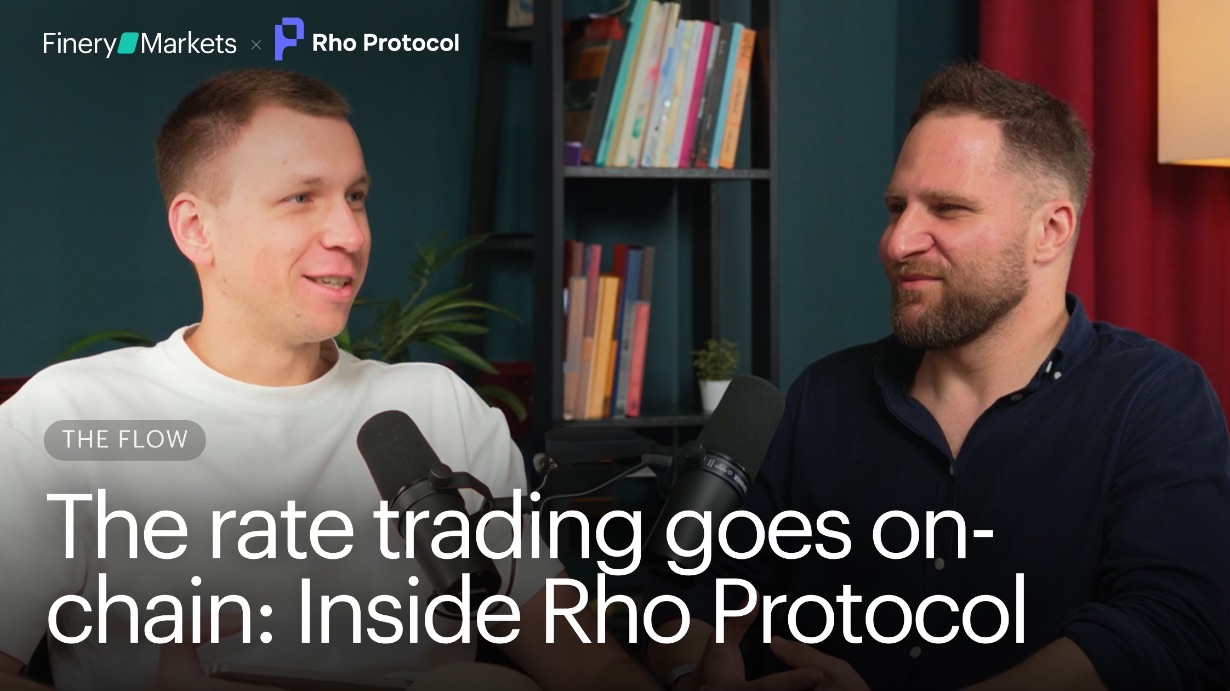
TL;DR
- Bitcoin steadies near $85K as President Trump clashes with Fed Chair Jerome Powell, raising questions about central bank independence and inflation control.
- Hidden Road wins a U.S. broker-dealer license, expanding fixed income capabilities ahead of its $1.25B Ripple acquisition.
- Canary Capital files for the first U.S. Tron ETF with staking, marking a bold regulatory move amid broader altcoin ETF filings.
- Kraken introduces FX perpetuals with 20x leverage, continuing its expansion into new asset classes after acquiring NinjaTrader.
- MANTRA’s token crashes over 90%, with the team blaming a large-scale forced liquidation by a single investor.
- Hyperliquid captures 70% of the onchain perpetuals market, signaling a major institutional shift toward DeFi-based derivatives.
Bitcoin Holds Near $85K as Trump-Powell Rift Fuels Market Unease
Bitcoin hovered just below $85,000 late Friday as rising political tension between U.S. President Donald Trump and Federal Reserve Chair Jerome Powell introduced fresh uncertainty into the markets close to the end of this week. The crypto market remained range-bound, even as the broader macro backdrop turned more fragile following Powell’s hawkish comments earlier in the week.
Speaking on Wednesday, Powell warned that Trump’s escalating tariff policy could trigger stagflation—slowing growth combined with rising prices—and made clear that controlling inflation remains the Fed’s priority. His stance signaled that monetary policy could remain tighter for longer than markets had anticipated. Trump, meanwhile, has privately floated the idea of removing Powell from his post, according to a Wall Street Journal report. Former Fed Governor Kevin Warsh is said to be a potential successor, though both Warsh and Treasury Secretary Scott Bessent have reportedly advised against such a move, citing the importance of central bank independence.
As speculation swirls, odds of Powell’s removal rose to 19% on Polymarket, a blockchain-based prediction platform. The pressure came as the European Central Bank cut interest rates for a seventh consecutive time, and the Philadelphia Fed manufacturing index plummeted to its lowest reading in two years, further stoking recession concerns.
Hidden Road Wins US Broker-Dealer License Ahead of Ripple Acquisition
Hidden Road, the prime brokerage firm soon to be acquired by Ripple, has secured approval from the Financial Industry Regulatory Authority (FINRA) to operate as a U.S. broker-dealer. The license, granted to its subsidiary Hidden Road Partners CIV US LLC, marks a key milestone for the firm as it expands its presence in traditional financial markets.
The newly granted broker-dealer status will enable Hidden Road to broaden its fixed income prime brokerage offerings, including clearing, financing, and other services tailored to institutional clients. “This is a significant step in the development of Hidden Road’s fixed income prime brokerage platform and bolsters our capabilities in traditional financial markets,” said Noel Kimmel, the firm’s president.
Earlier this month, Ripple announced a $1.25 billion agreement to acquire Hidden Road, with the deal pending regulatory approval. Backed by Ripple’s infrastructure and resources, Hidden Road plans to scale its operations and transition parts of its post-trade infrastructure onto the XRP Ledger (XRPL). The integration aims to cut costs and enhance efficiency in trade settlement, positioning Hidden Road as a major non-bank player in institutional prime brokerage.
Read more
Canary Capital Files for First U.S. Tron ETF With Built-In Staking
U.S. asset manager Canary Capital has filed to launch an exchange-traded fund (ETF) that would hold and stake TRX, the native token of the Tron blockchain. If approved, the fund would be among the first in the U.S. to incorporate staking directly into its initial ETF proposal, offering investors yield on top of token exposure. TRX currently offers an annual staking yield of approximately 4.5%, according to StakingRewards.com.
With a market capitalization of over $22 billion, TRX ranks among the larger altcoins and has seen growing institutional interest. Canary’s filing stands out amid a wave of altcoin ETF applications for its proactive inclusion of staking, a step that differentiates it from other products — such as Ether ETFs — that only moved to add staking after securing approval to hold spot assets. Regulatory clarity on staking within ETFs remains a developing area in U.S. markets.
Tron, a proof-of-stake blockchain founded by Justin Sun, supports smart contracts and decentralized applications. Sun and the Tron Foundation have faced legal scrutiny from the U.S. Securities and Exchange Commission, which filed charges in 2023 alleging fraudulent price manipulation involving TRX and BitTorrent’s BTT token. Settlement talks between Sun and the SEC are currently underway following a joint motion in February to pause proceedings.
Read more
Kraken Launches Forex Perpetuals With 20x Leverage on Kraken Pro
Kraken has expanded its derivatives offering with the launch of two foreign exchange perpetual futures contracts — GBP/USD and EUR/USD — now available on its Kraken Derivatives platform. The new instruments, which offer up to 20x leverage, are tradable through Kraken Pro, the exchange’s advanced trading interface introduced in 2022.
The move positions Kraken to tap into growing demand for FX exposure within the crypto trading ecosystem. “Kraken has long been one of the leading FX spot venues in crypto,” said Alexia Theodorou, Head of Derivatives at Kraken. “By introducing FX perps, we’re capitalizing on this market-leading position by providing clients with a powerful new tool to better navigate and tailor exposure to some of the most widely traded currency markets in crypto today.”
The contracts are not available to users in the European Union, the United Kingdom, or other regions outside of Kraken Derivatives’ eligible jurisdictions. The product launch comes on the heels of Kraken’s recent $1.5 billion acquisition of retail futures trading platform NinjaTrader, signaling the exchange’s ambitions to broaden its reach into new asset classes and attract both retail and institutional derivatives traders.
Learn more
MANTRA Token Crashes 90% in Sudden Collapse
Real-world asset (RWA)-focused Layer 1 blockchain MANTRA ($OM) experienced a stunning crash on Sunday, with its token plunging over 90% in just 90 minutes. The abrupt price drop — from around $5.21 to $0.50 — caught the market off guard and prompted immediate speculation about the cause, with early allegations of insider selling and investor panic.
Project representatives denied the crash was tied to internal actions. “Today’s activity was triggered by reckless liquidations, not anything to do with the project,” MANTRA posted on X. Co-founder John Patrick Mullin later elaborated that the event stemmed from a “massive forced liquidation from a large OM investor on a centralized exchange.” The token saw a partial recovery Tuesday, rising to $0.82 — up roughly 37% on the day, though still far from prior levels.
Speculation intensified when Lookonchain reported that 17 addresses had transferred over $227 million in OM tokens to exchanges since April 7. Some of those wallets were mistakenly linked to Laser Digital — a subsidiary of Nomura and a known backer of MANTRA. Laser strongly denied involvement, stating, “Assertions circulating on social media that link Laser to ‘investor selling’ are factually incorrect and misleading,” and confirmed that its $OM holdings remain locked.
Amid ongoing scrutiny, MANTRA’s team promised transparency. Mullin stated that a full post-mortem would be published within 24 hours, covering both on- and off-chain data. The incident has renewed concerns around liquidity risks, investor concentration, and token design across smaller Layer 1 ecosystems, especially those operating in high-volatility DeFi environments.
Read more
Hyperliquid Captures 70% of Onchain Perpetuals Market as Traders Shift From Centralized Platforms
Decentralized perpetual futures protocol Hyperliquid has surged to nearly 70% market share in the onchain perps market, reflecting a growing institutional pivot away from centralized derivatives platforms. The protocol processed $175 billion in trading volume in March and is already on pace to surpass $160 billion in April, with $83 billion in volume reported at mid-month.
Unlike traditional futures, perps use funding rate mechanisms to align contract prices with spot prices. Hyperliquid’s sharp rise — now processing nearly 10% of Binance’s volume — suggests increasing trader confidence in non-custodial, smart contract-based derivatives.
Since April 2024, Hyperliquid has steadily gained ground while competitors like Jupiter, GMX, and Vertex Edge have held smaller shares of the market. Analysts attribute Hyperliquid’s rise to compounding liquidity advantages and network effects — hallmarks of a maturing DeFi sector.
The structural appeal of onchain perps — including leverage, automated settlement, and custody-free execution — continues to attract sophisticated traders seeking alternatives to centralized platforms. Hyperliquid’s dominance highlights a broader shift toward DeFi-native instruments capable of scaling alongside institutional demand for transparency, accessibility, and risk-managed exposure.
Read more

























